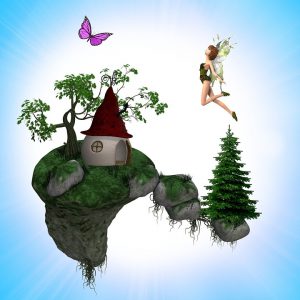How To Properly Make An Adventure Story?
Writing a good adventure story is not easy, and more considering how diverse the genre can be (what if what I understand as an adventure novel is not the same as you?). Within the same old adventure genre there are different subcategories. We have the travel novel (around the world in eighty days), the exploration (journey to the center of the earth) or even mixtures of both. There are also more action works (Indiana Jones).
It is impossible to give advice that is worth for all kinds of adventures, so the first advice to write a good work of adventure is to inspire you in those works of adventure that you like and you think good. If you love stories like Indiana Jones, Tomb Raider or Uncharted, examine what these stories have in common, and what you’re passionate about. It is not about regurgitating a hodgepodge of cliches, but about finding out what it is that makes you feel and how they do it, so that you can make it felt to other people when they read your work.
 So, step number 1: Investigate your gender. Be immersed in the kind of stories you like, review them, study them, and understand what makes them special for you. That is what you have to inspire your readers.
So, step number 1: Investigate your gender. Be immersed in the kind of stories you like, review them, study them, and understand what makes them special for you. That is what you have to inspire your readers.
Now, let’s see some general advice, and then specific tips according to gender:
- An adventure novel has to be exciting.
What all stories do have in common is that they are exciting. There are two very different emotions that are usually evoke in adventure novels: One is amazement or wonder; and the other is tension or adrenaline.
The wonder is usually in travel and exploration, and adrenaline in the action and adventure as such, although many usually have a bit of both. The golden temple with gigantic vaults full of colored lights is amazing, but as soon as the flammable pitch begins to fill, the tension increases.
A third emotion may be curiosity. The strange and unknown worlds are the basis of adventure novels, because people want to know.
-
 An adventure novel has to control the rhythm very well
An adventure novel has to control the rhythm very well
Exciting stories usually catch you because they have good rhythm, and you can read well. In the specific case of adventure novels, a fairly simple structure is usually followed: A disruptive element is present (say, an amphora of an unknown culture), there is a moment of brief calm before the storm (our researcher of cultures Ancient Greek can study it a bit) and this is interrupted by an antagonistic action, either from a character (the evil art thief) or from the environment (they have activated a trap and the temple is going to fall apart). There is a moment of high tension, such as a flight or a chase, and after the climax turns to a small calm (you can study the amphora calmly, have a fun conversation with your little assistant).
The structure New element -> Trigger of the action -> Climax -> Return to calm is very classic and works very well. The adventure novels are very functional and well use the classic and archetypal narrative resources, so in the worst case, you know that it is a structure that will not fail you.
To see a very clear example, I recommend taking a look at the movie Adele and the mystery of the mummy. The brief part of Egypt is the quintessence of adventure novels.
The usual thing is that there are 3 adventures or problems in a novel of standard adventures, which fit perfectly with the approach, knot and outcome.
…